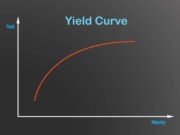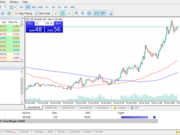What is ‘Oil Price to Natural Gas Ratio’
A mathematical ratio comparing the prices of crude oil and natural gas. In the oil price to natural gas ratio formula, the oil price is the numerator and the price of natural gas is the denominator. This ratio is used by energy analysts, traders and investors to gauge the market of oil versus that of natural gas.
Explaining ‘Oil Price to Natural Gas Ratio’
The higher the oil price to natural gas ratio, the greater the demand for oil. For example, a ratio of 6:1 means that a barrel of crude oil costs six-times as much as an Mcf of natural gas. If the ratio declines, then difference in the prices of the two commodities is narrowing.
The trading strategy supported by this ratio is to long oil when the ratio is below its historic average, and long gas when the ratio is excessive compared to previous time periods.
Further Reading
- Asymmetric and nonlinear pass-through of crude oil prices to gasoline and natural gas prices – www.sciencedirect.com [PDF]
- Is hub-based pricing a better choice than oil indexation for natural gas? Evidence from a multiple bubble test – www.sciencedirect.com [PDF]
- Different behaviors in natural gas production between national and private oil companies: Economics-driven or environment-driven? – link.springer.com [PDF]
- Oil price volatility and stock price fluctuations in an emerging market: evidence from South Korea – www.sciencedirect.com [PDF]
- Oil price volatility, financial institutions and economic growth – www.sciencedirect.com [PDF]
- Oil prices and the stock prices of alternative energy companies – www.sciencedirect.com [PDF]
- Financial ratios and corporate endurance: A case of the oil and gas industry – onlinelibrary.wiley.com [PDF]
- Natural gas prices and stock prices: Evidence from EU-15 countries – www.sciencedirect.com [PDF]
- Risk factors in stock returns of Canadian oil and gas companies – www.sciencedirect.com [PDF]
- A long-term view of worldwide fossil fuel prices – www.sciencedirect.com [PDF]


































